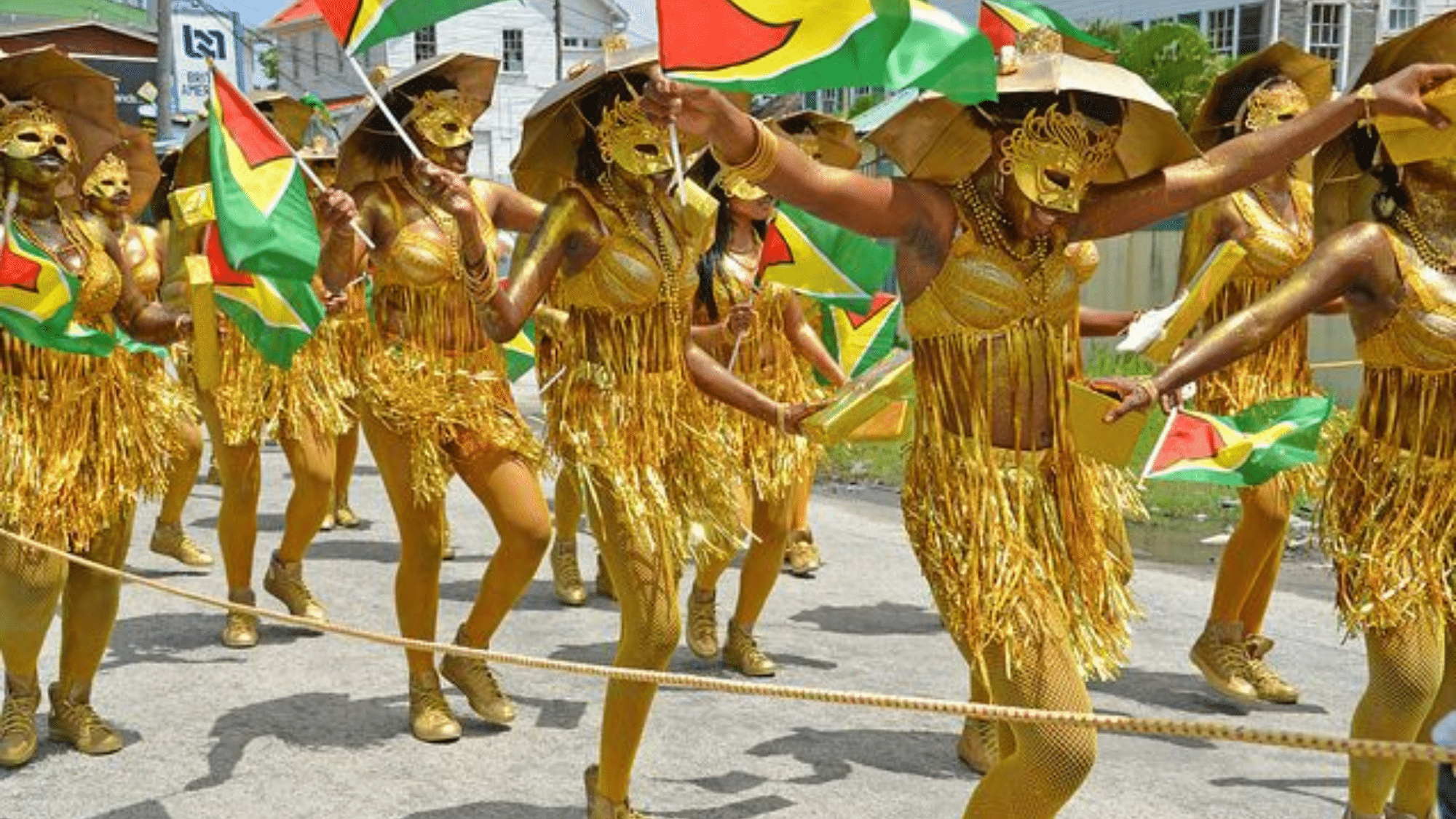Ever heard of Guyana? Most people haven’t — and even if they have, they might not know much about it.
So, what makes this small country on South America’s northern coast so special?
Well, the answer lies in its surprises. From powerful waterfalls and untouched forests to a mix of cultures and languages you wouldn’t expect in South America, Guyana stands apart from its neighbors.
In this blog, you will read about its landscapes, people, food, and everyday life — all in simple facts that show just how different this country is.
Lists of Facts About Guyana to Enjoy
1. Guyana means “land of many waters” in an indigenous language, reflecting its many rivers and streams.
2. Kaieteur Falls in Guyana is about five times taller than Niagara Falls, with a single drop of 741 feet.
3. About 80% of Guyana remains covered by forests, making it one of the most heavily forested countries on Earth.
4. Guyana has six different types of natural zones, including coastal plains, sandy rolling lands, and rainforests.
5. The Iwokrama Forest in central Guyana spans nearly one million acres of mostly untouched land.
6. Shell Beach stretches for 90 miles along the Atlantic and serves as a key nesting spot for four sea turtle species.
7. The Kanuku Mountains house over 60% of the bird species found in Guyana.
8. Guyana sits below sea level in many coastal areas, relying on a system of dams and walls for protection.
9. Lake Mainstay, a man-made lake, supplies fresh water to many communities in the Essequibo region.
10. The Rupununi Savannah changes drastically between wet and dry seasons, shifting from lush grass to arid plains.
11. Guyana gained its freedom from the United Kingdom on May 26, 1966.
12. Guyana stands as the only English-speaking country in South America.
13. The population includes people of Indian, African, Chinese, European, and native backgrounds.
14. Cricket ranks as the most popular sport in Guyana, reflecting its British colonial past.
15. Guyana belongs to both the Caribbean and South American regional groups, showing its mixed identity.
16. The country has three counties named after Dutch rivers: Berbice, Demerara, and Essequibo.
17. About 40% of the people follow Hinduism or Islam, unusual for a Western Hemisphere nation.
18. The Mashramani festival marks Republic Day each February with colorful parades and music.
19. Guyana keeps many Dutch legal customs, including how property sales must be announced publicly.
20. Despite being in South America, Guyana competes in West Indies cricket teams.
21. Pepperpot, a meat stew with cinnamon and cassareep (cassava juice), serves as Guyana’s national dish.
22. Guyanese cook with cassava in many ways, making bread, drinks, and thick stews.
23. Cook-up rice, a one-pot meal with rice, beans, and meat, shows both African and Indian cooking styles.
24. Black pudding, a blood sausage with rice, remains a favorite street food across the country.

25. El Dorado rum, made in Guyana, has won world awards many times.
26. Mauby, a drink made from tree bark, has a bitter taste but many health benefits.
27. Guyanese bake a black cake for Christmas using fruits soaked in rum for months.
28. Fish cakes made with salt cod show the lasting effect of British food habits.
29. Pine tarts, sweet pastries filled with pineapple jam, count among the most liked snacks.
30. Guyana grows some of the best coffee in the Caribbean region in its highland areas.
31. Guyana found major oil stores in 2015, changing its economic future overnight.
32. Sugar, rice, and bauxite formed the main exports for much of Guyana’s modern history.
33. Gold mining remains key to rural jobs, but it causes concerns about forest damage.
34. The Demerara sugar brand, known worldwide, comes from Guyana’s Demerara region.
35. Guyana exports roses and other fresh flowers to markets in the United States and Europe.
36. Rice farming takes place on land reclaimed from the sea through Dutch drainage methods.
37. Guyana makes ships that carry goods on its many rivers, keeping old boat-building skills alive.
38. The country exports millions of dollars worth of heart of palm, found in its forests.
39. Many world diamond companies buy rough stones found in Guyana’s interior areas.
40. Ecotourism grows as more people want to see Guyana’s untouched nature spots.
41. Guyana has one of South America’s smallest populations, with less than 800,000 people.
42. More Guyanese people live outside the country than within it, mainly in the US, Canada, and the UK.
43. The country uses both metric and imperial systems for daily measurements.
44. Guyana has a 98% literacy rate, one of the highest in South America.
45. Most Guyanese speak a creole English at home that blends African, Dutch, and Indian words.
46. The Wai Wai and Macushi people still live by old ways in remote forest areas.
47. About 90% of people live on the narrow coastal strip, leaving the interior mostly empty.
48. Gender roles stay quite fixed in rural areas but change quickly in Georgetown, the capital.
49. Respect for elders marks all Guyanese cultural groups, shown through special forms of address.
50. Most homes keep medicinal plant gardens for common health needs.
51. President Barack Obama’s homeland security chief, Jeh Johnson, has Guyanese roots.
52. The country has some of the world’s largest lily pads, known as Victoria Regia lilies.
53. Guyana chose to join the Commonwealth Cricket team instead of the South American soccer groups.
54. Sir Arthur Conan Doyle based his book “The Lost World” partly on Guyana’s table mountains.
55. The flag colors stand for: green (farms), white (rivers), red (effort), black (toughness), and yellow (mineral wealth).
56. Rihanna has Guyanese ancestry through her mother.
57. Guyana sits just 8 degrees north of the equator, giving it steady temperatures year-round.
58. Jim Jones led his group to mass suicide in Jonestown, Guyana, in 1978, killing over 900 people.
59. The rare Arapaima, one of the world’s largest freshwater fish, lives in Guyana’s rivers.
At the End
What makes Guyana stand out? This small South American nation offers a unique mix of nature, culture, and history unlike any other place.
Why does this matter? Learning about lesser-known places broadens our view of the world. It reminds us that beauty and wonder exist in every corner of our planet.
Got questions about Guyana? Drop them in the comments section below. Your interest might spark a follow-up post about this interesting country!















